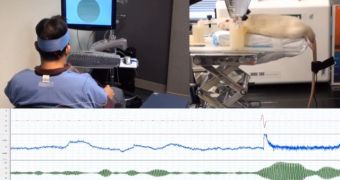We've seen loads of films and found plenty of books where humans and machines can somehow communicate telepathically, or people communicate telepathically through use of machines, or both. In real life, however, there aren't many working interfaces, and those that do exist can't really do much, and are raw prototypes themselves.
Still, there has been palpable progress over the last few years, and now it seems that a genuine brain-to-brain interface has been created.
A team of researchers from Harvard University have made a brain-to-brain interface (BBI) that lets humans control animals with their thoughts.
It's basically technologically assisted mind control, and works just by thinking the appropriate thought. So far, the BBI has been tested on rats, to great effect.
According to ExtremeTech, the interface allowed a human tester to order a rat to move its tail. The accuracy has been rated at 94%.
It takes around 1.5 seconds for the entire process. The human looks at the screen then thinks what the rat should do, at which point the BBI relays the command and causes the rat to do as it's mentally ordered.
Still, moving a limb is a simple enough command in the grand scheme of things. What the researchers are looking into now is how to relay more complex ideas like hunger.
Sadly, the technology is more terrifying than potentially beneficial. It would only take a crazed dictator and a small fanatic following to try to use something like this to mind-control everyone.
It's a good thing technology wasn't far enough along back in the days when the Hitler administration was running rampant.
It's unclear how much our reason would be able to help resist whatever the focused ultrasound (FUS) computer-brain interface (CBI) is relaying. Rats aren't self-aware, so they can't exactly notice that the thought of moving their tail isn't their own, but that of the person wearing an EEG-based BCI.
Anyway, for now, it would probably help more if scientists focused more on the reverse: an interface that would allow a computer to understand human thoughts and respond accordingly.

 14 DAY TRIAL //
14 DAY TRIAL // 